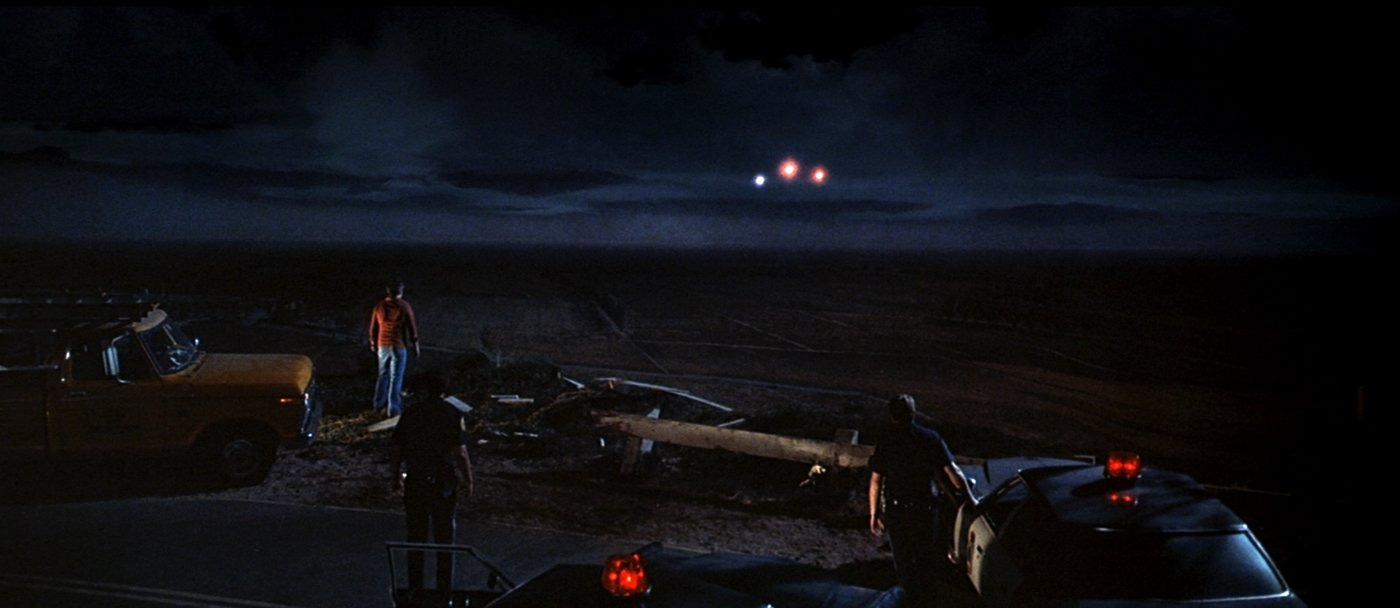Major U.S. Law Enforcement Organization Releases Detailed Guide on UAP
The Major Cities Chiefs Association released a comprehensive guide on UAP in June for state and local law enforcement agencies that is "intended to spur discussions within agencies."

By Dustin Slaughter (@DustinSlaughter)
In a surprise turn, the Major Cities Chiefs Association (MCCA), whose membership consists of police chiefs and commissioners from over 70 of the largest law enforcement agencies in the U.S. and Canada, produced a well-researched, highly detailed guide in June for its police executive membership on unidentified anomalous phenomena, tacitly acknowledging the existence of UAP.
The guide covers several key areas related to UAP:
Recent Congressional action, including the newly-reintroduced bipartisan UAP Disclosure Act
Clippings about UAP from mainstream news outlets
'Law enforcement considerations' for the topic
History of UAP-related federal government programs
The historic Congressional hearing featuring whistleblower David Grusch, and Naval aviators Ryan Graves and David Fravor
International UAP reporting trends
Additional related topics
“Local law enforcement may have an interest in understanding the potential risks UAP pose to officers when encountered in the field and determine how the details of these incidents are tracked and analyzed to develop appropriate policies and tactics to respond,” the group notes.
“Upon recognizing member agencies are in need of, and are hungry for, quality deliverables that push the profession to look 5, 10, 15 years down the road, the Major Cities Chiefs Association (MCCA) is decidedly leaning into the future,” MCCA Executive Director Laura Cooper told the Register.
Cooper also stated that the MCCA’s Futurist Initiative, established last year, has approached other topics for consideration and discussion within law enforcement, including AI. The UAP topic is the Initiative’s latest focus.
An MCCA spokesperson added that the guide “is intended to spur discussions within agencies and bring awareness to the [UAP] topic.”
A source familiar with the guide’s creation told the Register under the condition of anonymity that “UAP [are] something we know exists, but [are] not well documented or in some cases taken seriously. With Congress opening up to the idea, we hope local law enforcement will too.”
The guide also acknowledges the long history of police reporting of UAP while on and off duty and the sharing of this information “with other local or federal law enforcement agencies.”
Some of that reporting is even included in the MCCA’s guide. One November 2023 report from a Sheriff’s deputy in Blairsville, Georgia, involved a triangle-shaped UFO with one green light on each side. “This was unlike anything I had ever witnessed,” the deputy stated.
The Register has also documented reports from first responders, including a 2023 incident involving an emergency services helicopter. The crew witnessed 15 objects in the night sky that could only be detected with night vision goggles.
A law enforcement executive who requested anonymity to discuss the MCCA’s guide told the Register that police and national security officials, for example, take weapons of mass destruction seriously, despite the low frequency of such occurrences. UAP, they added, are also relatively low-frequency occurrences, but with potentially greater unpredictability. “We should be taking these incidents seriously too.”
“The MCCA, at this time, does not have a formal recommendation on reporting UAP sightings,” a spokesperson for the group told the Register.
Some experts are offering to bridge this gap.
UAPMed, an advocacy organization composed of law enforcement, medical professionals, mental health experts, and other first responders, is focused on reducing stigma within the medical and first responder communities. The group has produced a white paper entitled Incorporating UAP Incidents into First Responder Policies, Procedures, and Protocols.
UAPMed recommends developing a uniform reporting process for anomalous incidents; a standardized data collection process that includes witness testimony, physical evidence, and electronic data; and first responder training exercises for UAP incidents at the local, state, and federal levels.
The group also suggests utilizing the existing network of state fusion centers that was launched following the terrorist attacks of September 11, 2001, to share information about UAP occurrences. Another recommendation includes collaboration with domestic and international first responder bodies and the scientific community, among other policies.
The white paper also provides 18 historical case studies of police responses to significant UAP incidents from 1952 to 2023. One dramatic incident occurred on April 17, 1966, involving a high-speed police chase with local law enforcement from multiple jurisdictions. A fictionalized version of this incident was popularized in the film Close Encounters of the Third Kind.
Two Sheriff deputies in Portage, Ohio, witnessed a “bright, disc-shaped object rise from behind trees.” One deputy further described it as similar to “the head of a flashlight, about 40 feet wide and 20 feet tall.”
“The lines of the object were very distinct,” he continued. “Somebody had control over it. It wasn’t just floating around. It can maneuver.”
The object suddenly darted away from the deputies at high speed. The deputies decided to pursue, but the object maintained a constant distance ahead of them throughout the chase. The pursuit stretched over 80 miles, from Ohio into Pennsylvania. During this time, officers from other jurisdictions either joined the chase or confirmed the object's existence from their respective positions.
The paper commends the quick police response; inter-jurisdictional cooperation; and thorough documentation of the incident by law enforcement; which “demonstrated a commitment to duty and public safety.”
The report also notes, however, that some of the officers later faced skepticism and ridicule for reporting the incident, highlighting “the broader societal challenges in addressing UAP.”
Whether the Major Cities Chiefs Association's (MCCA) move to encourage police executives to take the challenges presented by UAP more seriously will be successful remains an open question. It also remains to be seen whether this shift in approach will help reduce the professional stigma that has long plagued law enforcement and other related fields when dealing with UAP reports.








